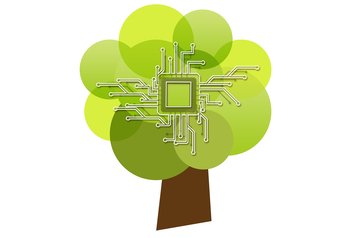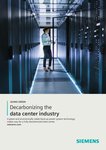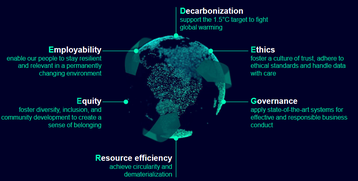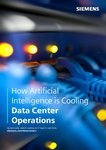It seems like an obvious statement, but data center operators need to be responsive and adaptable to their clients. Rigidity in an age of such fluid workloads, both in quantity and nature simply won’t work.
With outsourcing investment set to expand at a healthy 12.6 percent CAGR for the next decade, bringing the overall CAGR total up to 7.7 percent, it has never been more important for data centers to respond to the needs of the colocation client, and that should be at the forefront, not just of data center design going forward, but also of retrofits, upgrades, and refurbishment of existing facilities. The challenge presented by compute-heavy AI workloads only compounds the issue, with a need for power and cooling infrastructure to match the new paradigm.
DCD spoke to Ciaran Flanagan, global head of sales, data center verticals at Siemens, about the company’s solutions for the challenges of the modern data center, and how opportunities for collaboration with the industry’s best and brightest hold the key to the future of workload management. We start by discussing three of the biggest challenges facing the industry.
“AI workloads are going to continue to drive the need for more power, and there's going to be a lot of push and pull between local interests, government, power generators, and the business demand that's coming from the colo operator, who could be providing capacity in some cases for critical national infrastructure. Governments have to be able to respond and support at least some of this demand. That's a tension that we're going to have, and that tension is getting worse.”
Another push-pull comes from the ongoing drive for sustainability. On one hand, your customer demands more data centers, on the other, you have to be actively reducing their net carbon output.
Flanagan explains more: “You're largely driven by the need for decarbonization. Many major world governments have made big commitments on decarbonization, and they've all identified the data center industry as a key player in driving decarbonization.
“We will see more and more regulation and more need to report on overall energy consumption, energy mix, and carbon versus non-carbon. More regulation is coming, which will drive more transparency, which will drive the need for more control, more information, and more data. That's something the industry is very well aware of, and it's something we’ve started to respond to, although we're probably not where we need to be yet.”
As well as environmental impact, data centers have a social impact, and as Flanagan points out, this is another key pinch point. “PR around the industry centers on the fact that data centers are very much part of our digital lives, they're our digital footprint and part of how we live. On the one hand, they bring us great convenience, great benefits, great value, things like finding a cure for cancer, making your travel more efficient, all of these things.
“On the other hand, the younger generation is very climate aware and potentially sees the data center as a negative. That's another conflict that needs to be worked out. We've got to find a way to make this coexistence between different perspectives work and convince people that we're net good for society. There's so much more we can do, and it's the responsibility of all of us to make sure that we maximize that opportunity.”
For Siemens, tackling these issues starts with the company’s DEGREE framework for sustainability which you can read about here.
However, for Flanagan, the secret to solving these issues lies in having maximum visibility of your operation, and access to the right partnerships. “We launched our Siemens Xcelerator platform two years ago to help our customers digitize their operations, taking away that manual activity, and making things intuitively software-driven.
Everything will now be from a digitization point of view, everything will now be software represented, virtually for the real world. “We've got a Digital Twin approach we call ‘Building X’, and that's where we see the industry going, not just data centers.
‘Building X’ is a suite of dashboards and tools that will allow our customers to better control their operations and buy capabilities to allow them to add value to their existing infrastructure. Building X will provide a lens on some of the operational, energy, and even cybersecurity dashboards. It will allow the customer to see into their infrastructure from the software layer, and help those customers who are truly pursuing that Edge philosophy.”
Siemens Xcelerator will provide component level visibility and will support the need for evidence of commitment to decarbonization, Flanagan believes that a side effect will be a more transparent industry, working together in partnerships for the common good – something that he welcomes: “We see the challenges of sustainability and digitalization as two sides of the same coin. We do not believe that Siemens alone can address all of those challenges, and that's part of the reason we've got Siemens Xcelerator.
“It's not just a digitalization platform, but also an ecosystem of partners. We will use and work with third-party experts for our customers. For example, we will use a third-party ‘Big Four’ consulting firm to help us with a customer who's got a sustainability benchmarking challenge. This industry is moving to a much more transparent type of culture than it had been in the past, and that's a good thing.”
The integration of the ‘Building X’ Digital Twin – or virtualization of each facility within Siemens Xcelerator, provides a versatile way of sandboxing operations, thus allowing operators to test different configurations before going live.
However, sandboxing is just the beginning. “When something changes in the real world, the operator can see it in the Digital Twin before it happens in the physical world. However, I've talked to customers who use Digital Twin as part of their training program for their engineers and technicians. I see customers who use it as an asset management tool.
“The efficiencies that you can get from representing the real world, digitally, go much broader and much deeper than just simply, the building of your new facility. It can also make your operations more efficient, it can make your employability better, and it can make it easier to train new people on what's happening in the environment. But it can also help customers make decisions about capacity – the possibilities are near limitless.”
The important message here is that when it comes to implementing solutions thrown up by the world of data from tools like Siemens Xcelerator, the secret is to play to your strengths and let others play to theirs to make a whole far greater than the sum of its parts. Flanagan explains that with Siemens providing the data, and the conduit for collaboration, the sky can be the limit.
“Sometimes Siemens will look at the market, and see small, clever software startup companies, and buy them because they know more than we do about a particular topic. On the other hand, we will often come across opportunities and problems where the expertise sits outside the company, and we bring that expertise into our customer offering.
“There are good examples of this on the Siemens Xcelerator Partner Network. We’ve created an infrastructure of great companies. When you bring two of them together, you've got a winning combination for the customer. We would never be so arrogant as to say that we've got all the answers in-house, we will always look at the customer challenge and figure out if we need to get partners in to help us solve this problem.”
To find out more about how a partnership with Siemens could benefit your business, please click here
More...
-
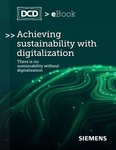
Achieving sustainability with digitalization
There are more sustainability KPIs than ever. But how do we keep tabs on them all, whilst ensuring equipment is performing as efficiently as possible? Enter, digitalization.
-

EU to spend €1.2bn funding European cloud and Edge efforts
Hopes to break the US hyperscaler cloud monopoly
-
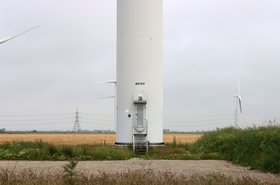
In search of wind
Wind turbines are getting larger, but so are the challenges of deploying them

